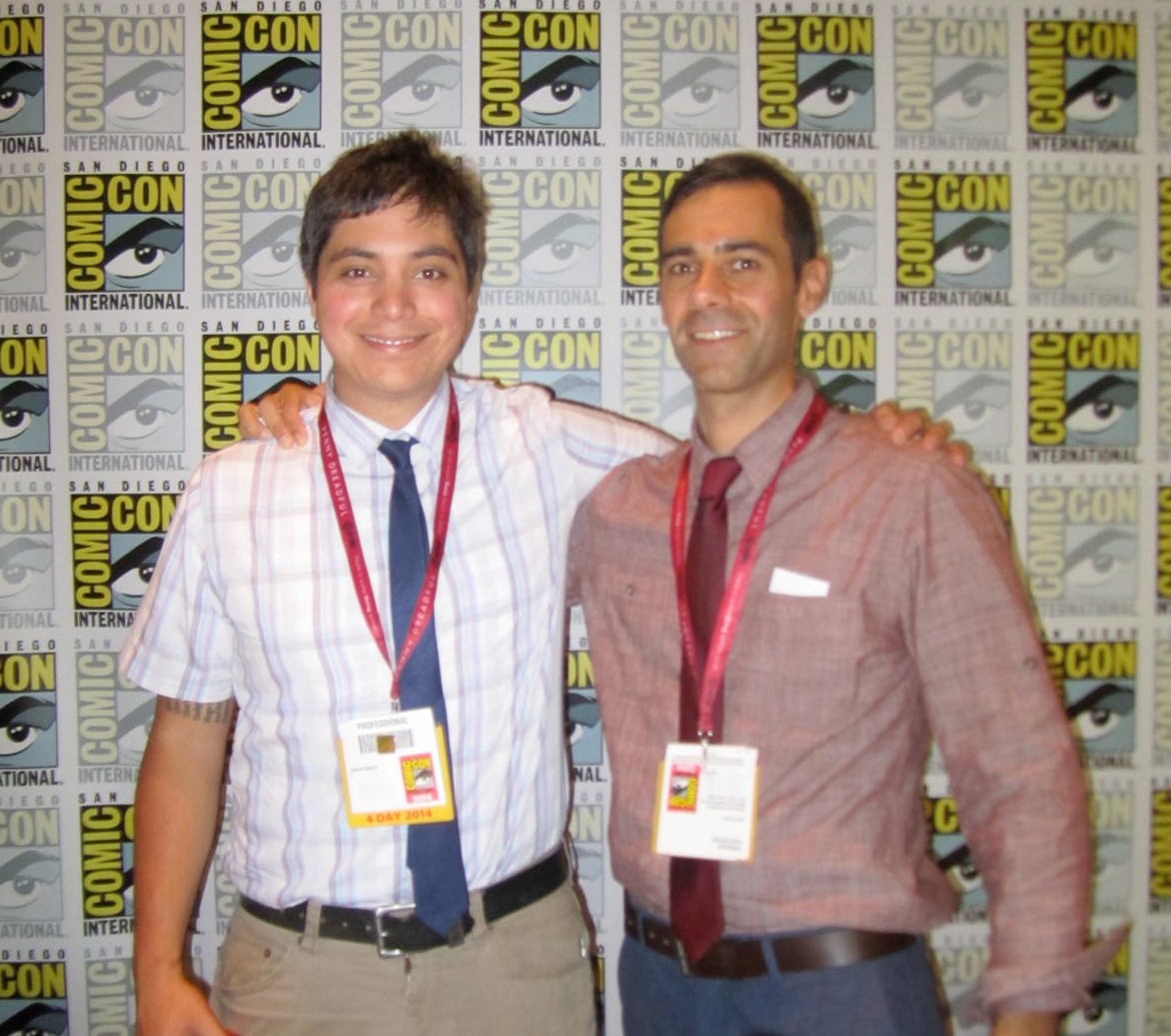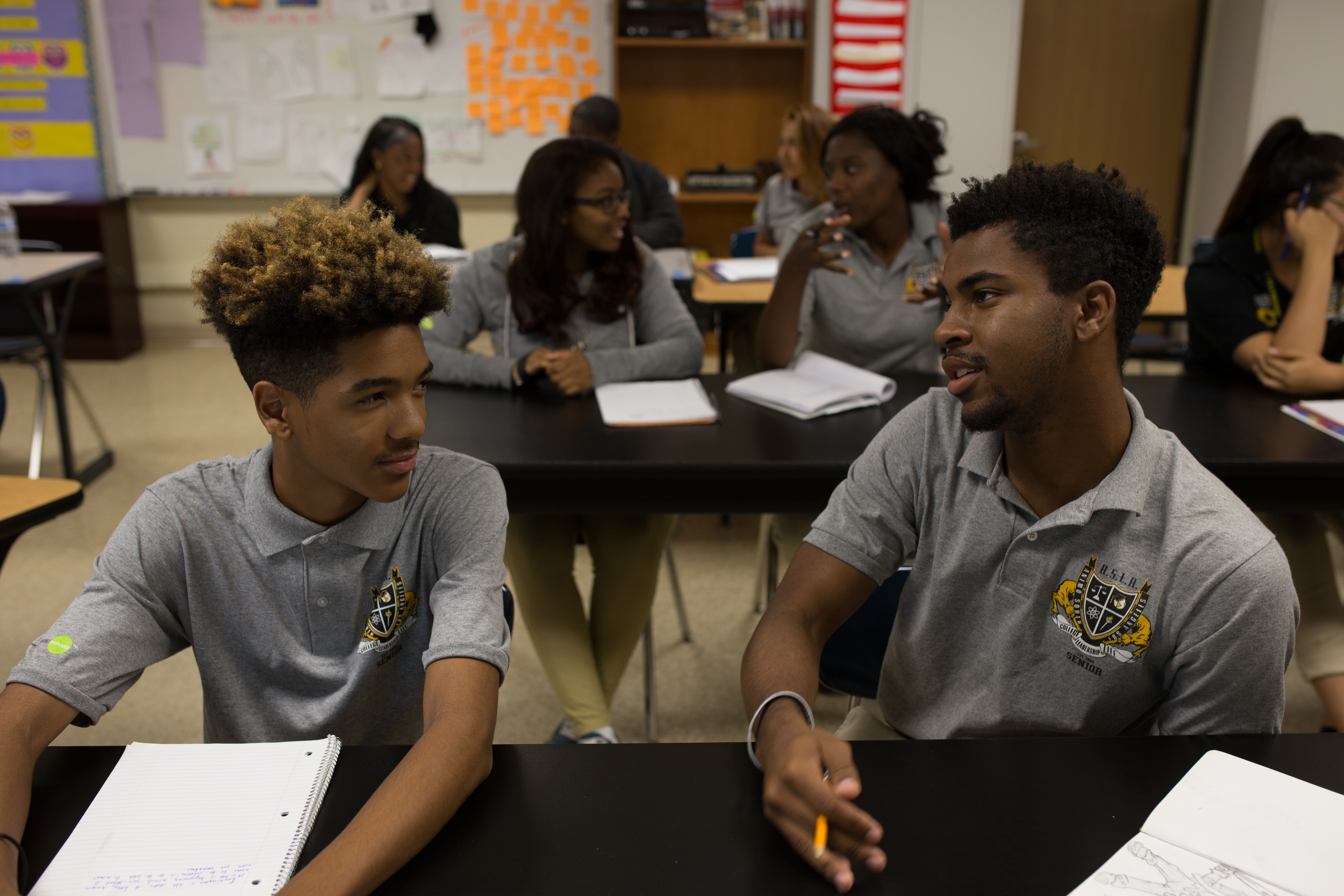How Comic Books Can Create Community in the Classroom

Comic-Con isn’t only about the heroes who don capes and possess super powers. The San Diego-based convention celebrates heroes in the classroom too! This summer, Green Dot Public Schools Curriculum Specialist Peter Carlson taught educators from all over the world how they could incorporate comic books into their lessons in order to address the diverse needs of their students and make learning more relevant.
As a curriculum specialist, Carlson supports teachers with subject-specific coaching and provides them with varying curriculum options. At Comic-Con, Carlson lead a panel alongside Antero Garcia, and Susan Kirtley called Teaching with Comics: An Interactive Workshop for Educators. The workshop looked at how literacy can be supported in any content area via comic books and popular culture. Attending educators learned how to use comic books to meaningfully engage students of varying proficiency levels. The workshop drove home that comic books can be a great way to keep students curious about and invested in learning by relating to their experiences, interests, and the world around them.
Panel One: The Beginning
Carlson’s discovery of the impact of comic books is akin to the origin stories of the heroes who grace the cover of these very books. Growing up, Carlson had a deep love for comics, amassing a large collection, but his indifference to the narrative direction they were heading in at the time led to a disconnect. During his early years of teaching, after his parents moved out of his childhood home, Carlson was reunited with his massive collection of comics.
Instead of selling his collection, he brought them into his classroom library as an option during sustained silent reading (SSR), a form of school-based recreational reading where students read silently for a designated time period every day. “This organic thing started happening–reluctant readers and strong readers all started reading through these comics, and from there this community of interest and literacy started evolving,” said Carlson. “Students would read comics during sustained silent reading, recommend what they read to their friends, and seek out the next issue.”
“This organic thing started happening–reluctant readers and strong readers all started reading through these comics, and from there, this community of interest and literacy started evolving.” – Peter Carlson
Soon students started coming to Carlson’s classroom before school, during lunch, after school, even bringing their friends to his class library. It became a norm to see students in Carlson’s classroom having debates about which heroes were better, the heroes’ intentions, and comic plots. “A colleague and I thought about how this could inform our teaching and be a way for students to realize that their eager absorption and critical analysis of these comics was the same thing we want them to do during other literacy activities within class,” said Carlson. “We thought, ‘how can we pose questions and prompt all readers to reflect on the messages of the text beyond this idea of good versus evil?’”
Creating a Community of Learning
To leverage the momentum comics had generated around character and plot, Carlson began to reference comics when discussing traditional literature in his lessons. During Socratic Seminars focused on traditional texts, students were encouraged to reference outside sources, such as comic books and their own experiences, to address bigger essential questions. Students then took elements of comics from sequencing and storyboarding to analyze text, identify vocabulary, and create visual narrative outlines.
In his classroom, comics became a means of fostering a community that valued inquiry, dialogue, experience, and empathy while engaging in reading, writing, speaking, and listening practices.
“This one particular student was hesitant to participate in anything, but through comic books, we saw this spark and new found passion for literature grow,” recalled Carlson. From there, Carlson introduced the student to longer graphic novels and graphic versions of classics such as the Biography of Malcolm X and Dante’s Inferno, leading the student to eventually consume full novels in a similar fashion.

Creating a community of learning within a classroom works to remove subject-based stigmas students may enter classrooms with.Often times students are exposed to English as this mundane subject where they read novels with no relevance to them.
The idea that they can find enjoyment in class reading assignments and have the choice to write about topics that actually interest them, can be foreign to some.
From Student to Superhero
This summer, Carlson created an introductory ninth grade English Language Arts unit based on civic engagement and civic responsibility. Comics often depict people who are imbued with the power to create change in their communities, whether they reside in Gotham City, Atlantis, or Metropolis. What students can learn from these themes, is that they are capable of being the same agents of change in their own communities, no capes or super powers required.
Civic Superheroes Sample Lesson
The unit contains plans to invest students in classroom routines and procedures, practices protocols for annotating, analyzing, and summarizing fiction, while focusing on the theme of empowering individuals to overcome personal and communal conflicts.In the unit students analyze the conflicts of comic book protagonists. From there, students are encouraged to pull from their own encounters with conflict and critically look at conflicts within the world they live in. They use this reflection to create their own superheroes with superpowers they believe they’ll need to overcome challenges for the year, all while asking three essential questions:
- What does it mean to be empowered?
- For whom or to what are individuals responsible?
- How does adversity shape who we are?
“As educators, we’re not just teaching text,” said Carlson. “I believe education should offer an opportunity for students and teacher within a classroom to build a workshop. A place where you can try and fail, simultaneously grappling with big ideas.”
Carlson’s work at Green Dot is just one of the many ways all Green Dot educators create learning environments where content is connected to real-world issues and relevant experiences. In doing so, Green Dot students are building a foundation for how to create meaningful connections and build critical thinking skills in life beyond high school. In addition, we believe providing students with opportunities to take part in an active community that allows them to learn both academics and key character skills such as empathy, resilience, and emotional awareness is vital for their long-term success.
